|

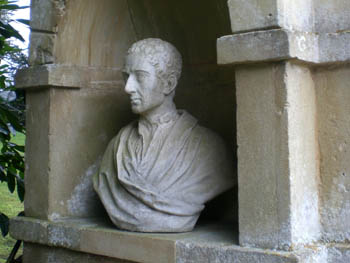 Pope's Grotto
Pope's Grotto
St James' Independent School for Boys
19 Deep Cross
Twickenham
Middlesex
United Kingdom
TW1 4QG
Telephone: 0208 892 2002
This eighteenth century grotto at Twickenham is most unusual for several reasons. Firstly it provides a useful subterranean walkway under the main Twickenham to Kingston road. Secondly it is virtually the sole surviving structure associated with Alexander Pope's residence at 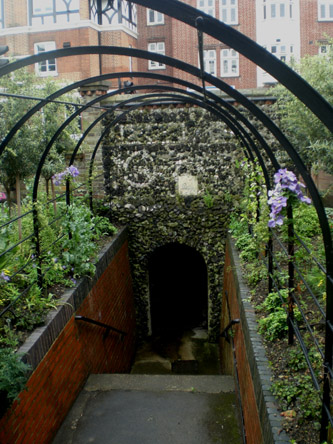 Twickenham and most surprising of all, it has survived. Twickenham and most surprising of all, it has survived.
Pope was a legendary poet, letter writer and satirist. He suffered a bone disease in his younger days and as a result focussed his adult life on his writings and creating a grotto wonderland. He came to Twickenham as a means of living in rural surroundings and built and occupied his villa for about a quarter of a century from 1719. The villa was constructed on the riverside plot facing the river and backing on to the road. During his occupancy he extending his land holding from just the riverside plot (east), across the road behind the house (west), to provide a garden with more privacy than that afforded by the busy and rather public River Thames frontage enjoyed at the house.
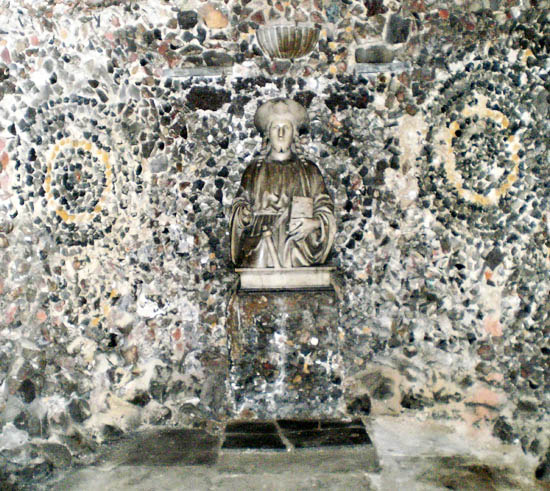
The division of the resulting two acre estate by the main road was no doubt tiresome and Pope's solution was to resolve a problem by making it an opportunity. Here the opportunity was to build a tunnel of great character in the form of a grotto. In doing so he also uncovered a subterranean spring of water.
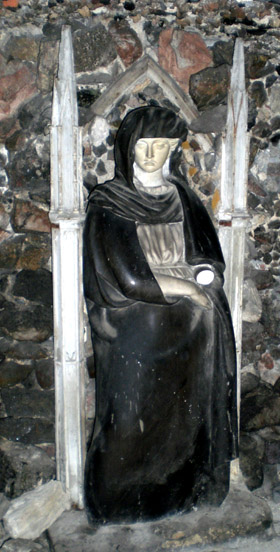
The grotto tunnel was completed by 1725 and became a memorable experience for many notable visitors. It emerged beneath the house at garden level on the river side of the estate, giving a vista of the garden and River Thames beyond, with the house above and behind the tunnel entrance. At the other end of the tunnel you emerged below ground level and climbed up to the higher level of the private garden plot. The tunnel thus provided a mystical transition between two distinct landscapes. This experienced was enhanced when exotic decoration was added inside and out as time went on. Overall it was 29 feet long and six and a half feet high in the arched centre.
Decorative materials used included shells, flints and iron ore. Flooring was paved with pebbles. The spring of water echoed throughout the cavern as it ran in a rill. Shutting the doors of the grotto resulted in a camera obscura effect reflecting on the walls the activity on the river and the local landscape.
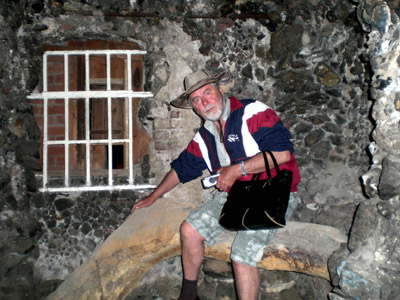 From the outset Pope conceived his creation as a Musaeum or Nymphaeum. This is where mythology combined with imagination as Pope associated his creation with Cicero's villa outside Ancient Rome. Here he could let his imagination run riot with the classical notions of Homer's grotto of Naiads and Calypso's bower. He also used it as a place of contemplation for preparing his writings and is pictured seated and writing about the 1730s. This was at a time when he also started remodelling the structure with additional chambers on the river exit beneath the house. He extended the passage and sought to provide a Cold Bath and a fall of water. In due course a new interest in mining and geology extended Pope's repertoire of decorations and led to the use of stalactites, Bristol and Cornish Diamonds, spas, ores, marbles and freestone from Coombe Hill. This was after a visit to Bristol and Hot Wells spa. From the outset Pope conceived his creation as a Musaeum or Nymphaeum. This is where mythology combined with imagination as Pope associated his creation with Cicero's villa outside Ancient Rome. Here he could let his imagination run riot with the classical notions of Homer's grotto of Naiads and Calypso's bower. He also used it as a place of contemplation for preparing his writings and is pictured seated and writing about the 1730s. This was at a time when he also started remodelling the structure with additional chambers on the river exit beneath the house. He extended the passage and sought to provide a Cold Bath and a fall of water. In due course a new interest in mining and geology extended Pope's repertoire of decorations and led to the use of stalactites, Bristol and Cornish Diamonds, spas, ores, marbles and freestone from Coombe Hill. This was after a visit to Bristol and Hot Wells spa. 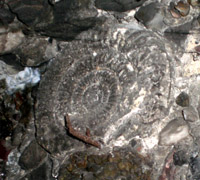 Assorted natural stone and geological samples arrived in bulk from 1740. In his never ending pursuit of embellishment Pope further modified the spaces and chambers around the riverside entrance to give something that more resembles what we find today. albeit severely constrained by the foundations of the modern buildings above. Assorted natural stone and geological samples arrived in bulk from 1740. In his never ending pursuit of embellishment Pope further modified the spaces and chambers around the riverside entrance to give something that more resembles what we find today. albeit severely constrained by the foundations of the modern buildings above.
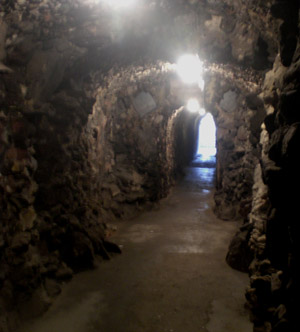
Pope died in 1744, his work never competed. His house and gardens being leased, they reverted back to the owners, the Vernon family. The estate was acquired by Sir William Stanhope who also added minor embellishments to the grotto decor and configuration, including some statues inside. Passing through the hands of other owners, Pope's villa was demolished in 1807. The grotto passage and chambers survived particularly because of its value in providing access across the Twickenham to Kingston road.
Today the grotto is built over and hidden by a variety of 20th century buildings. As a result the grotto surroundings are much altered from Pope's time, including a lengthening of the tunnel to accommodate road improvements in the past. 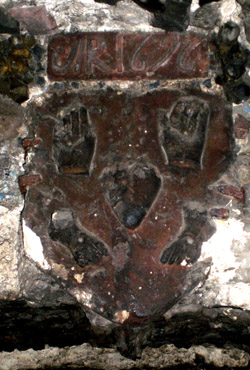 In spite of this the grotto survives and still displays a variety of fascinating decorations and features. Today it requires an imaginative restoration to reinstate the former glory of Pope's grotto wonderland. It is grade I listed by English Heritage. In spite of this the grotto survives and still displays a variety of fascinating decorations and features. Today it requires an imaginative restoration to reinstate the former glory of Pope's grotto wonderland. It is grade I listed by English Heritage.
Illustrations:
1. a) Alexander Popes bust at Stowe in the Temple of British Worthies. b) What was once part of the magnificent grotto entrance facing the River Thames is now a cramped underground arch masked by modern developments.
2. The western entrance in the private garden.
3. St James the Great, one of the original apostles and patron saint of travellers in one of the chambers. 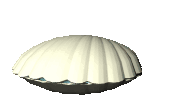
click the shell for more details of St James Day and children's grottoes
4. A nineteenth century figure possibly of St Catherine or the Blessed Virgin Mary in one of the chambers.
5, Dr Bruce Osborne astride the Willow Tree reputedly planted by Pope. It died in 1820 and this section of bough has remained in the grotto ever since.
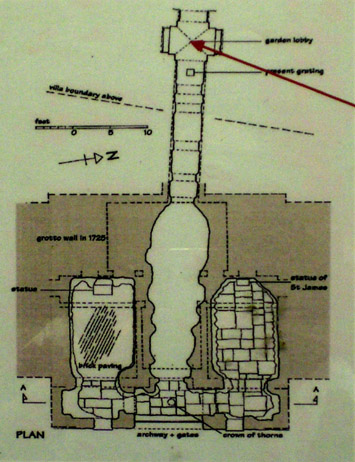 6. Ammonite casting in the wall - one of thousands of specimens that decorate the interior.
6. Ammonite casting in the wall - one of thousands of specimens that decorate the interior.
7. The passage looking towards the western entrance.
8. Wall decoration dated 1696.
9. The plan of the grotto today - the spring is marked with the red arrow albeit no longer apparent.
10 A view of the grotto from the river before the modern developments masked the entrance.
ADDITIONAL INFORMATION


GREAT BRITISH GROTTO GRADING
Click to go to Grotto.Directory home page
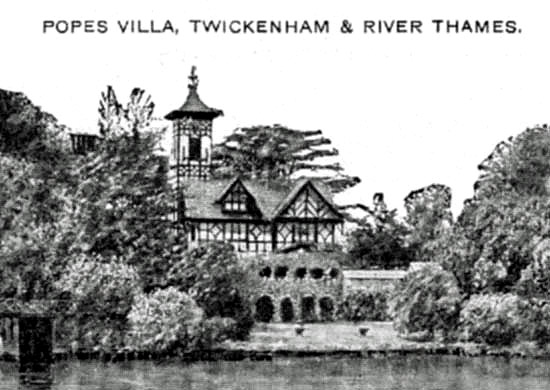
CONSTRAINTS
Not open to the public, On private property, Open set times only
FACILITIES
Conducted Tours of Locality, Entry Fee, Grotto - just one
LANDSCAPE
Inland Water, Urban
REGION
England - Southern
THE FEATURES PRESENT
+A created provenance that links it to ancient mythology or legend, +Crystals and/or minerals, either natural or simulated, +Dark and mysterious chambers and cave like spaces, +Fossils and/or shells incorporated into the decor, +Internal stonework that is natural, recycled or simulated to give a subterranean decor, GRADED FIVE
|









